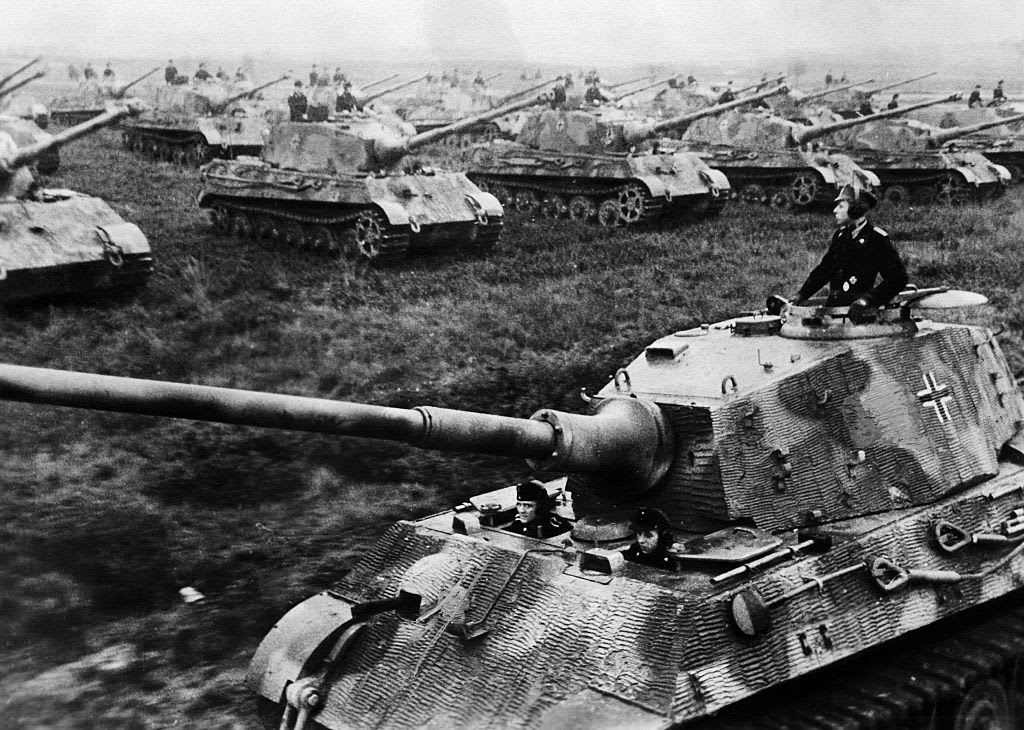Bloodiest War in History
World War II Explained

WWII, the second World War, was a global war where all the great powers chose between two alliances—the allies or the axis. This war lasted a total of six years from 1939 to 1945.
Adolf Hitler’s Nazi Party
Under Adolf Hitler's leadership, his Nazi Party ran the country through a dictatorship. Anyone who did not agree with the government was killed, and people Hitler did not like were sent to concentration camps that were worked to death, tortured, or tested. They controlled everything and everyone’s life, and made sure nothing was against them. People were too afraid to speak against him so they just listened to whatever the government told them. The young were brainwashed and were members of youth organizations. By 1939, over 90 percent of children were part of Hitler's youth organizations. The Nazi Regime now had full control over Germany.
The Invasion of Poland
Hitler already took land in Europe and the Allies were tired of it. They warned Hitler that if he invaded Poland that they would declare war. On 1939, 4:45 AM, one and a half million German troops invaded Poland. The German luftwaffe bombed all Polish airfields, denying them to defend their border. German U-boats and warships attacked their naval forces, stopping them from escaping. The UK and France then declared war on Germany for the Invasion of Poland. This invasion of Poland marked the beginning of World War II.
The Battle of France
A German invasion of France on 1940, where in six weeks the German forces defeated allied forces by mobile operations. They conquered Belgium, Luxembourg, the Netherlands, and France. Italy also joined Germany and invaded France over the Alps. Land operations on the Western front were put to an end. France fell and so did the hope to win the war. Parts of France were placed under German and Italian military occupation. The total number of casualties for the Allies were 2,260,000, while the Axis only had 163,676 casualties. This was a huge victory for the Axis. Hitler now only had to worry about the UK.
Operation Barbarossa
On June 22, 1941, Hitler launched the biggest invasion the world has ever seen with over three million troops, 150 divisions, and thousands of tanks. Germany captured hundreds of thousands of troops with very minimal casualties. They pushed through with ease until a great battle of Moscow. The Soviet Union stalled the Germans long enough for the Soviet winter counteroffensive to start pushing the Germans back. This battle costed the German army 830,000 men. This operations was a huge turning point in the war because it opened up the Eastern front. The Germans were now in a two-front war which made the German supply very low. The Eastern front had some of the largest battles and highest WWII casualties.
Battle of Midway
After the Attack of Pearl Harbor, the Japanese won many battles and took a lot of the pacific area. Six months later, the United States finally defeated Japan in one of the most important naval battles. They countered the Japan ambush with the advantage of code-breaking. This battle had inflicted permanent damage on the Japanese Navy. This was another huge turning point in WWII, allowing the United States to move into offensive positions.
Italy’s Surrender
British and American forces pushed the Germans and Italians out of North Africa, which then lead the invasion of Sicily. Italy and Mussolini’s government fell on July 1943. Germans in Italy forced the Allies to keep fighting until 1945. The Axis alliance lost a great ally, which was bad for Germany because the Allies victory was getting closer and closer.
D-Day and Its Importance
On June 6, 1944, a massive allied invasion took place with over 156,000 American, Canadian, and British soldiers landing on Normandy, France. Hitler’s strength was very low, so he decided to put all his strength to the Western front which caused the Germans a loss in the Eastern front. Soviets then took Poland, Czechoslovakia, Hungary, and Romania because of the Ally invasion in France. Hitler gathered the rest of his forces in the Battle of the Bulge which failed and was the last major German offensive.
End of World War II
The End of World War II was on September 2, 1945. It is marked as one of the deadliest conflicts in human history. There were up to 85 million fatalities including starvation, disease, massacres, genocide, bombings, and the use of nuclear weapons. Germany was split up into four zones with the UK, USA, France, and the USSR. This was the start of the Nuclear Age—the Cold War. We need to learn from this war that inflicted so much pain towards the world and make sure that we never have a war like this again.
Works Cited
About the Creator
Jacob Nelson
17 | Journalist | Facts don’t care about your feelings






Comments
There are no comments for this story
Be the first to respond and start the conversation.